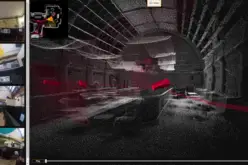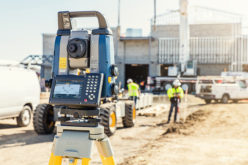Next Stop, the Red Planet – ExoMars 2016 Launched to Search for Traces of Life
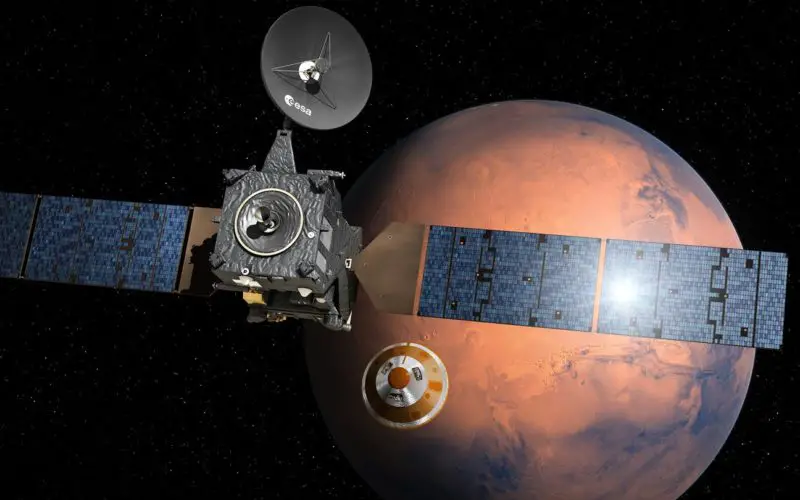
On 14 March 2016 at 10:31 CET, the ExoMars 2016 mission of the European Space Agency, ESA, and the Russian Federal Space Agency, Roscosmos, lifted off from the Russian Cosmodrome in Baikonur towards Mars. On board the Proton rocket were the Trace Gas Orbiter (TGO) and the Schiaparelli landing demonstrator (Entry, Descent and Landing Demonstrator Module; EDM). After separating from the launcher upper stage almost 11 hours after launch, the spacecraft duo transmitted their first signal to the ground at 22:29 CET. “This mission came about through close cooperation between governments, industry and science. It will continue the search for traces of life on Mars and also test new technologies,” said Pascale Ehrenfreund, Chair of the Executive Board of the German Aerospace Center (Deutsches Zentrum für Luft- und Raumfahrt; DLR). In a follow-up mission scheduled for launch in 2018, a rover will be delivered to the surface of the Red Planet. DLR’s Space Administration is supporting the ExoMars 2016 and 2018 missions by coordinating the German contributions for ESA. Also involved in the ExoMars 2016 mission are the DLR Institute of Aerodynamics and Flow Technology, the DLR Institute of Planetary Research and (prior to the mission itself) the DLR Institute of Aerospace Medicine.
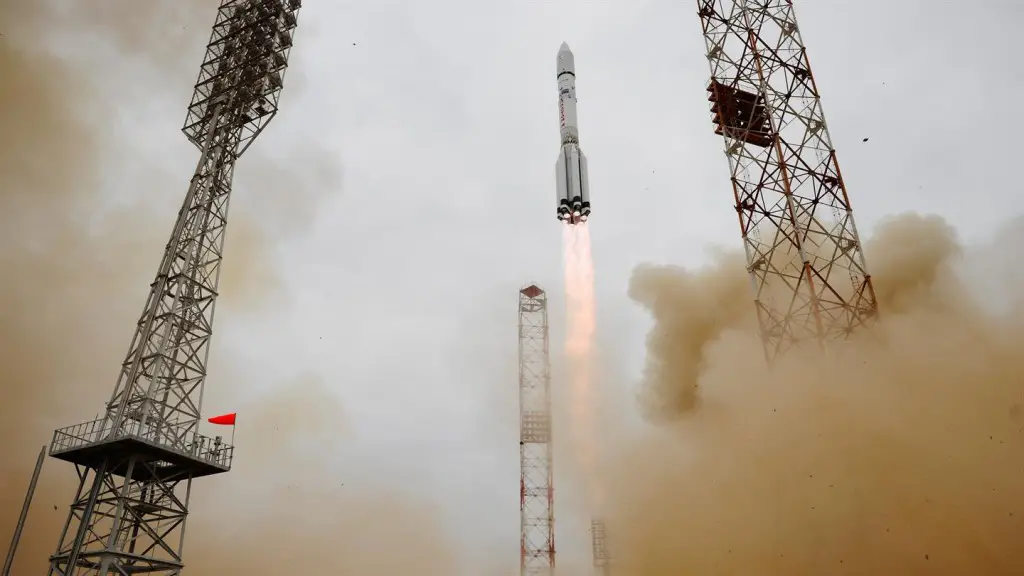
ExoMars 2016 mission liftoff to the Red Planet.
Credit: ESA
Journey to the Red Planet
“With the successful launch of the ExoMars mission, a new chapter has begun for European planetary research under the leadership of ESA. Following Mars Express and successful contributions to international planetary missions, German scientists and engineers are also excited at the prospect of the spacecraft’s flight and its arrival at the Red Planet,” said Ehrenfreund. After the launch and deployment of the solar panels and the communications antenna, the TGO and Schiaparelli will fly together through interplanetary space in the direction of Mars for approximately seven months. Three days before arrival, Schiaparelli will separate from the TGO, which will then enter an orbit 400 kilometres above the surface of Mars. “Schiaparelli will initially continue its flight in deep hibernation, until it is woken up again a few hours before entering the Martian atmosphere. Upon entry, the landing capsule will be decelerated from approximately 21,000 to around 1650 kilometres per hour by aerodynamic drag. Its heat shield will protect it from burning up; during braking, extreme temperatures are generated – around 1500 degrees Celsius,” says Oliver Angerer, Team Leader for Exploration at the DLR Space Administration. A parachute will further slow down the craft, until it is jettisoned at an altitude of just over one kilometre. Thrusters will take care of the final speed reduction. Two metres above the surface, they will be switched off and Schiaparelli will fall the rest of the way, a landing test for the follow-up mission ExoMars 2018.
Schiaparelli – lander with DLR sensors and weather station
Landing on Mars is still a major challenge. Schiaparelli will test different technologies that will help the rover of the ExoMars 2018 mission perform a safe landing – materials for the heat shield, a parachute, a radar altimeter and an thruster system for the final landing phase. During the flight through the atmosphere, the fourCOMARS+ sensors (COMbined Aerothermal and Radiometer Sensor) that were developed by DLR’s Institute of Aerodynamics and Flow Technology in Cologne, will continuously measure heat flow, gas radiation, pressure and the surface temperature at the rear of the heat shield. “This valuable flight data will play a key role in improving future landing capsules and reconstructing the atmospheric parameters along the flight path,” said Ali Gülhan, who will evaluate the collected data in Cologne together with his colleagues. After it has landed, Schiaparelli will only be active on the surface of the Red Planet for a few days. In that period, primarily data collected during the landing will be transmitted. However, since the scientists are also interested in the climate of Earth’s neighbouring planet, a ‘weather station’ is installed on Schiaparelli. The DREAMS package (Dust Characterisation, Risk Assessment and Environment Analyser on the Martian Surface) will measure, for example, wind speed, humidity and pressure on the surface of the Red Planet and provide the scientists with a ‘Mars weather report’ that will help in the planning of future missions.
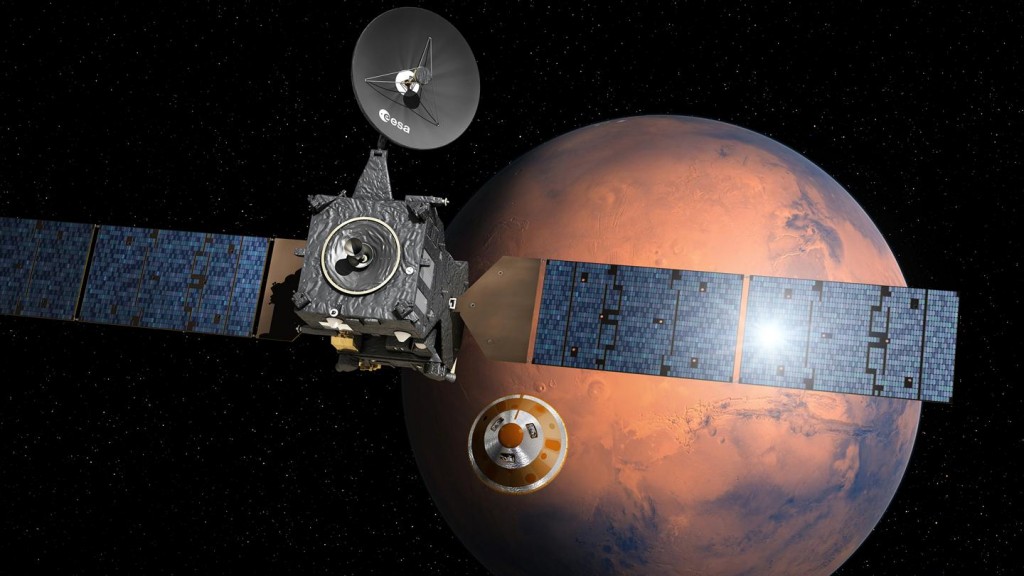
ExoMars 2016 mission. Schiaparelli landing manoeuvre
Credit: ESA
TGO – spacecraft searching for trace gases
While Schiaparelli collects data on the Martian surface, the TGO will orbit the Red Planet to examine the atmosphere with its four instruments at an altitude of approximately 400 kilometres. Above all, the scientists are interested in methane. This trace gas can arise through geological and also biological processes and therefore may provide indications of life. The European Mars Express spacecraft has already detected small quantities of methane; TGO has the task of tracing the sources. For this purpose, the Nadir and Occultation for Mars Discovery (NOMAD) instrument – a spectrometer suite covering infrared, visible and ultraviolet wavelengths – will precisely measure the composition of the Martian atmosphere. The Atmospheric Chemistry Suite (ACS) extends the measurement range of NOMAD with three further infrared spectrometers, while the Fine Resolution Epithermal Neutron Detector (FREND) will map hydrogen-abundant regions on the Red Planet down to a depth of one metre. The Colour and Stereo Surface Imaging System (CaSSIS) will provide high-resolution colour and stereo images of the surface of Mars. CaSSIS will also create individual 3D stereo images of interesting areas, for example in potential source regions for trace gases, and thus support NOMAD and ACS. “If NOMAD finds increased trace gas concentrations, we will carefully examine the relevant areas with CaSSIS for any indications of geological activity. If, for example, we see any signs of volcanic activity, that will be an indication of geological formation of methane,” explained Ernst Hauber from the DLR Institute of Planetary Research. He is a member of the international science team and will assess the CaSSIS data and therefore the geological information with his colleagues from Berlin.
ExoMars 2018 – a quick look ahead
In 2018, the second ExoMars mission will be dispatched to the Red Planet. It will deliver a rover onto the Martian surface and also carry an instrument package with it on the landing platform. One part of the scientific payload on the rover is the Panoramic Camera (PanCam). One component of that system is a high-resolution stereo camera developed by the DLR Institute of Planetary Research. Also, for the first time the rover will take samples from a depth of up to two metres with a drill. Because the surface of Mars is currently very hostile to life, deep samples are more likely to contain traces of life.



